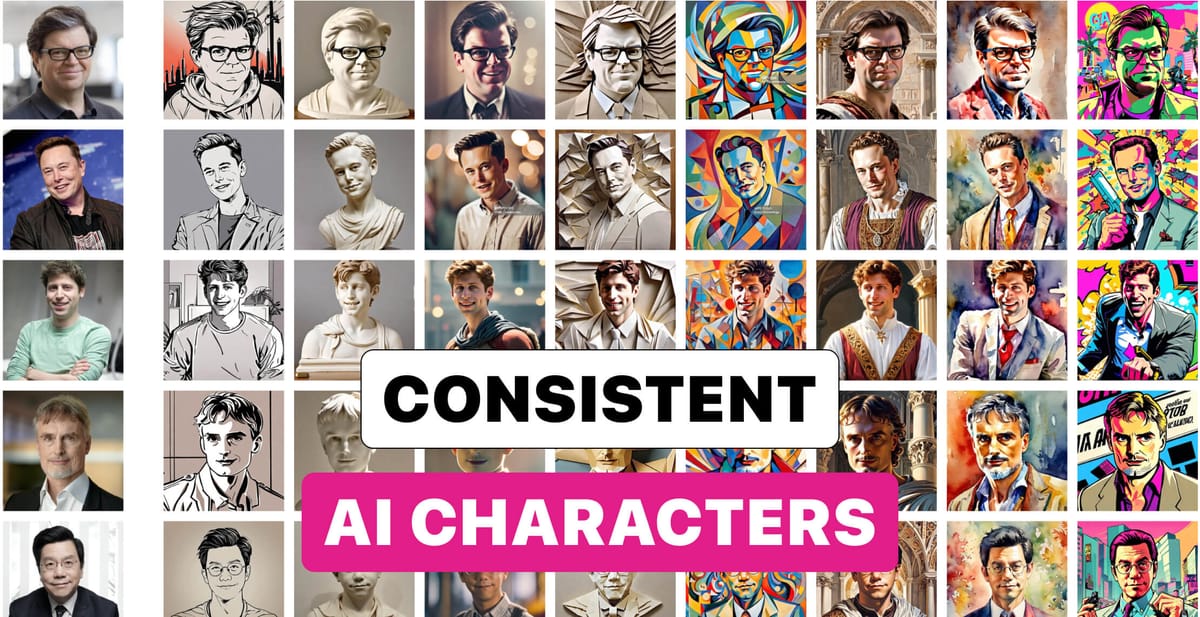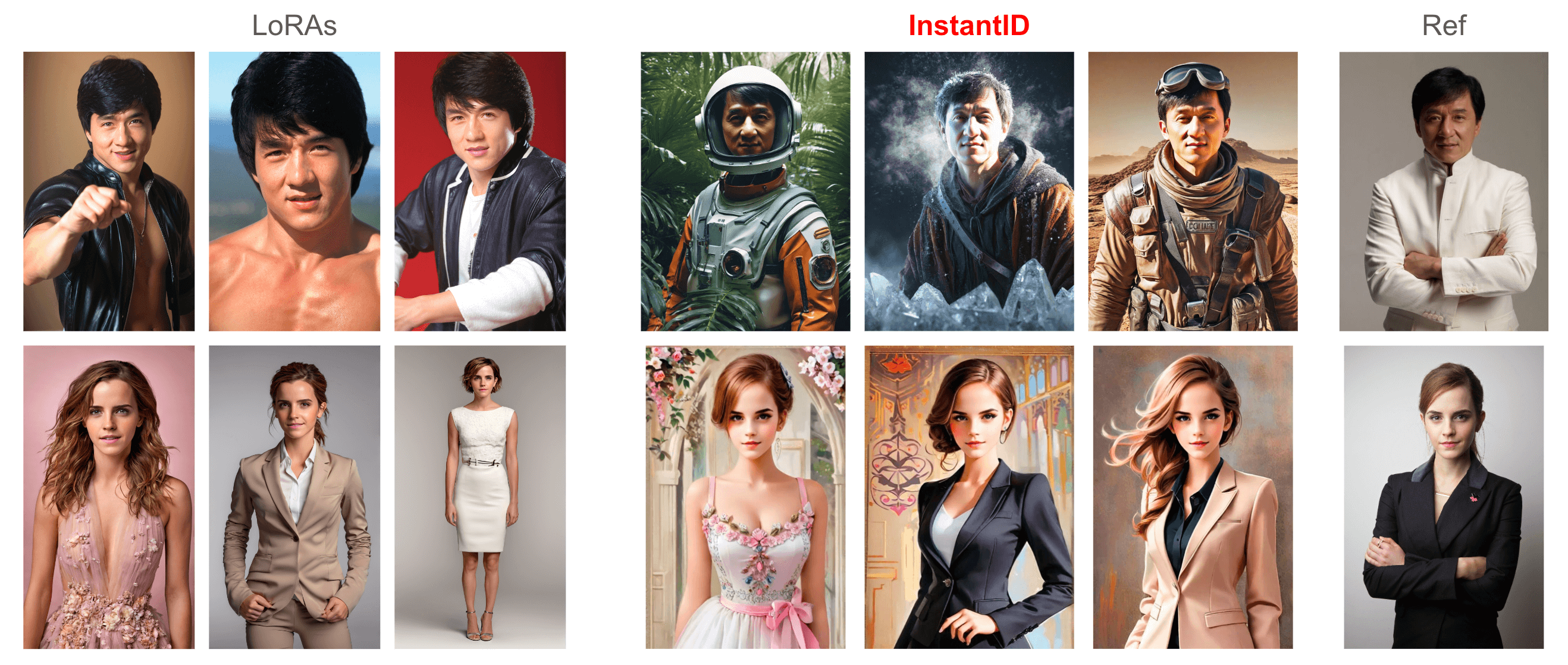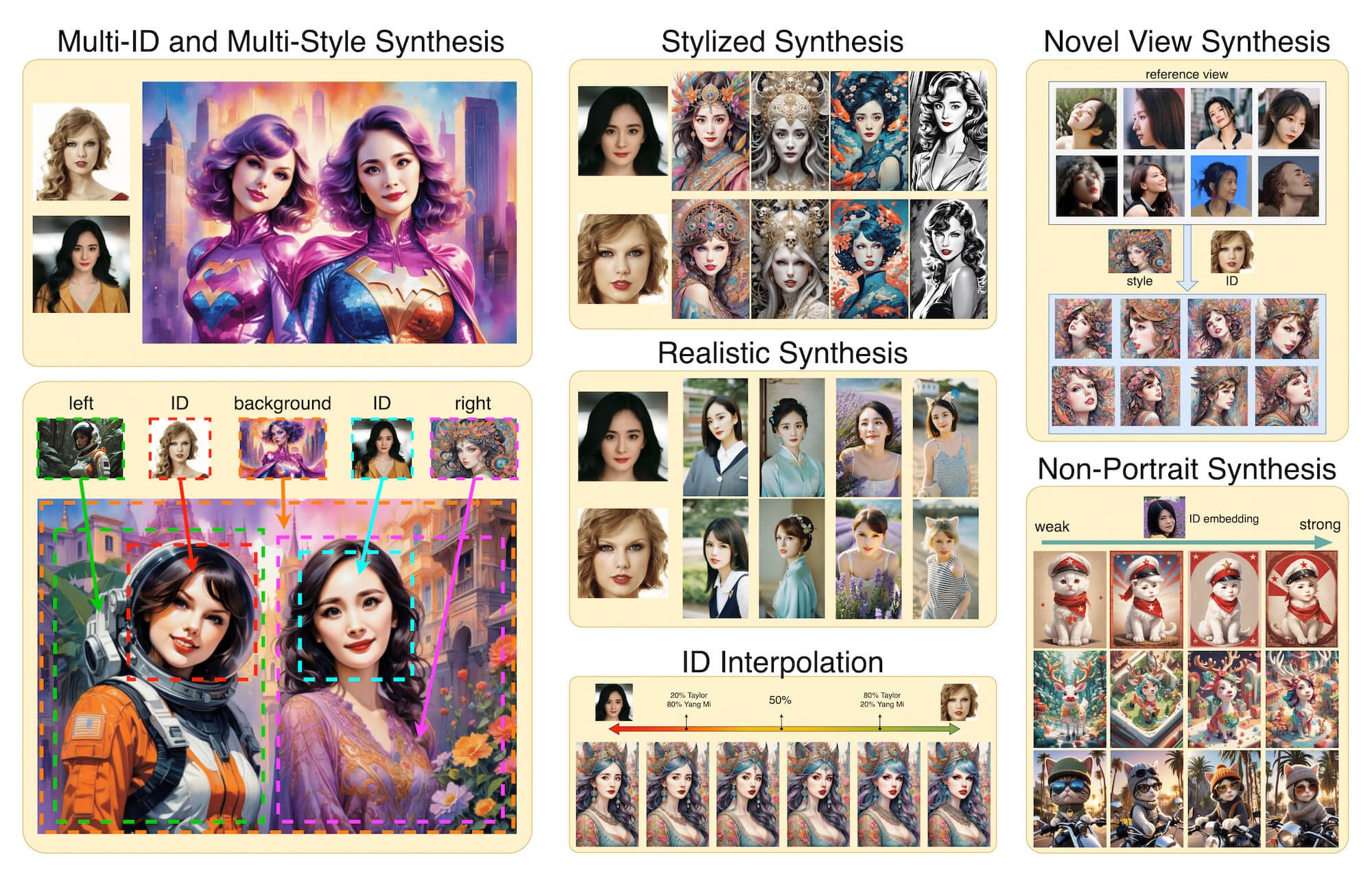
One of the most requested capabilities in AI image generation is being able to easily create consistent characters. This will unlock new creative possibilities, from reducing production costs for animated films and video games to enabling amateur creators to easily craft their own digital identities. Yet reliably generating intricate facial details that preserve a distinct visual identity, especially within varied poses and settings, has remained an elusive challenge.
New research from Beijing's InstantX Team demonstrates a promising step toward this goal. Their “InstantID,” introduces a tuning-free method to enable consistent character generation using only a single facial image as reference.

Up until now, Quantized Low-Rank Adaptation (QLoRA) has represented the cutting edge in achieving consistent character generation. However, using QLoRA requires fine-tuning (training the model on a dataset of images depicting the desired character). It's time-intensive and must be repeated from scratch for each new persona.
InstantID, in contrast, accomplishes a similar level of fidelity without any specialized training whatsoever. This zero-shot inference capability makes consistent character generation more accessible than ever before.

InstantID is a plug-and-play module compatible with existing diffusion models like Stable Diffusion. At its core is a novel technique that extracts robust semantic identity embeddings using a facial recognition model, rather than the common approach of CLIP image encoders.
Augmenting the identity embedding is a decoupled cross-attention mechanism that facilitates image prompts without compromising text editing capabilities. This allows InstantID to preserve style control - changing details like hair color or clothing via text prompts while maintaining consistent facial identity.
The third component is an IdentityNet module that encodes spatial details from reference images to further improve fidelity. According to the researchers’ experiments, InstantID produces remarkably consistent depictions across various poses, expressions and lighting conditions using only a single facial image. Try the InstantID demo for yourself here.
While still an early-stage research demonstration, InstantID points toward a future where creating personalized digital identities or crafting recognizable characters could become trivially easy. For media productions, this could significantly reduce animation costs. Anime studios, for example, could base episodes around a persistent visual identity without repeatedly re-drawing the same character. Indie game developers could also minimize expensive character modeling.
In online spaces, consistent avatar generation could enable more creativity in profile images, YouTube videos, or the burgeoning metaverse. And for privacy-conscious individuals, reliably synthesizing public imagery without exposing personal photos could reduce facial recognition risks.
Of course, like any generative technology, consistent character synthesis also introduces new challenges around consent, misinformation, and intellectual property. The researchers acknowledge that ethical considerations must remain at the forefront as this technology evolves. But is that enough?
While breakthroughs that enhance creativity deserve celebration, the ability to easily synthesize realistic human faces also introduces risks that merit careful attention - notably surrounding consent and potential misuse. As this technology becomes more capable, we must grapple with thorny questions about the responsibilities (if any) researchers have when open-sourcing technology, as well as usage rights and ownership of personas in our own likeness.
Most urgently, a prime concern in this regard is that technology like InstantID will enable new forms of nonconsensual deepfake at scale - especially personalized deepfake porn. Needless to say, proactive and continued research into protective solutions, including robust watermarking tech like SythID and improved manipulation detection through initiatives like the Content Authenticity Initiative, will be vital.
Overall, while InstantID opens up a world of creative possibilities and promises creative empowerment, preserving consent and cultivating responsible norms should be priorities on the technology's ethics roadmap. It is imperative that researchers, developers, regulatory bodies, and users work in tandem to establish ethical guidelines and technological safeguards, ensuring the responsible use of these powerful tools in our increasingly digital world.

